What led to the insurrection of Jan. 6? Just look at our monuments
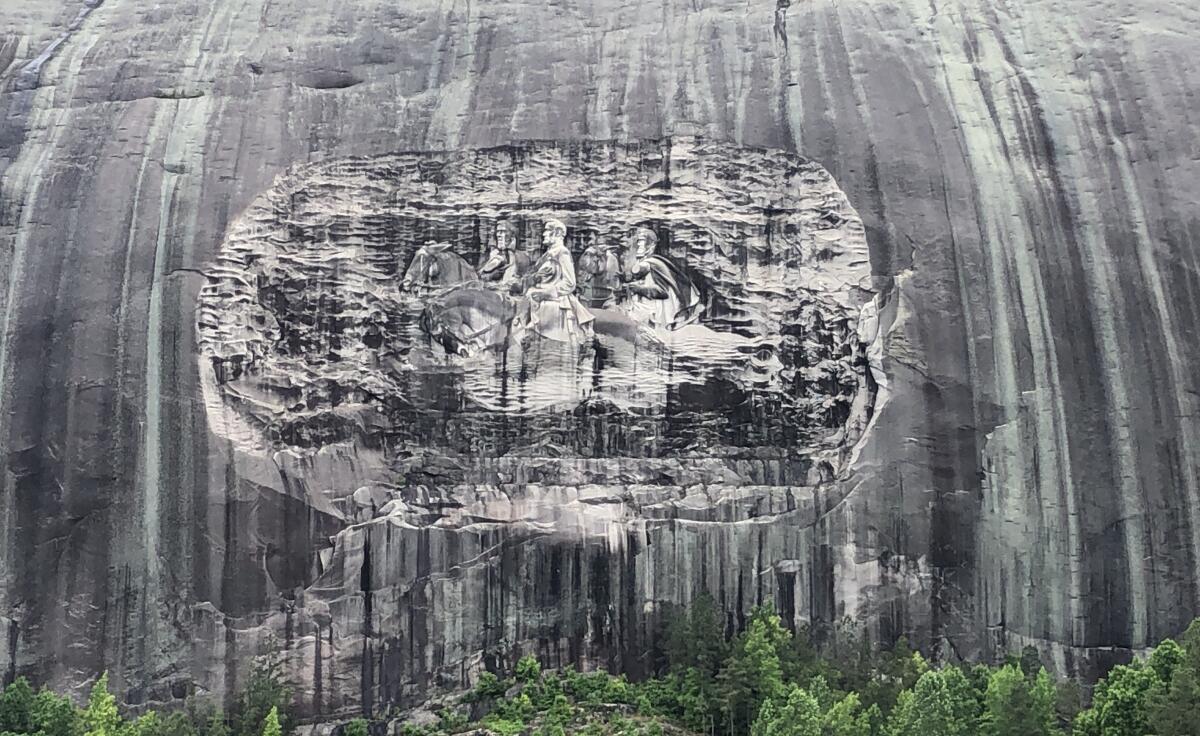
- Share via
It’s been a week. Let’s get right into it. I’m Carolina A. Miranda, arts and urban design columnist, with the week’s essential art news:
How we remember history
It was with revulsion that I watched the Jan. 6 select committee hearing on Thursday evening. Revulsion at the violence. Revulsion at the actions of figures like Jared Kushner, who said he was too busy ramming through pardons for Trump’s cronies to recognize what was happening. Revulsion at some of the coverage that followed, including Fox News’ refusal to air the committee’s presentation live and its chyron claim that it was a “show trial” along with ABC News hauling out former New Jersey Gov. Chris Christie as commentator. Thanks, ABC News, for the impeccable moral authority.
One thing my mind kept circling back to were comments by Chairman Bennie Thompson, a Democrat from Mississippi, who at the top of his remarks introduced himself by stating: “I am from a part of the country where people justified the the actions of slavery, the Ku Klux Klan and lynching. I’m reminded of that dark history as I hear voices today try and justify the actions of the insurrectionists on January 6th, 2021.”
That statement took my brain to two places simultaneously: a recent visit I made to the Confederate monument at Stone Mountain in Georgia and Elizabeth Alexander’s new book, “The Trayvon Generation.”
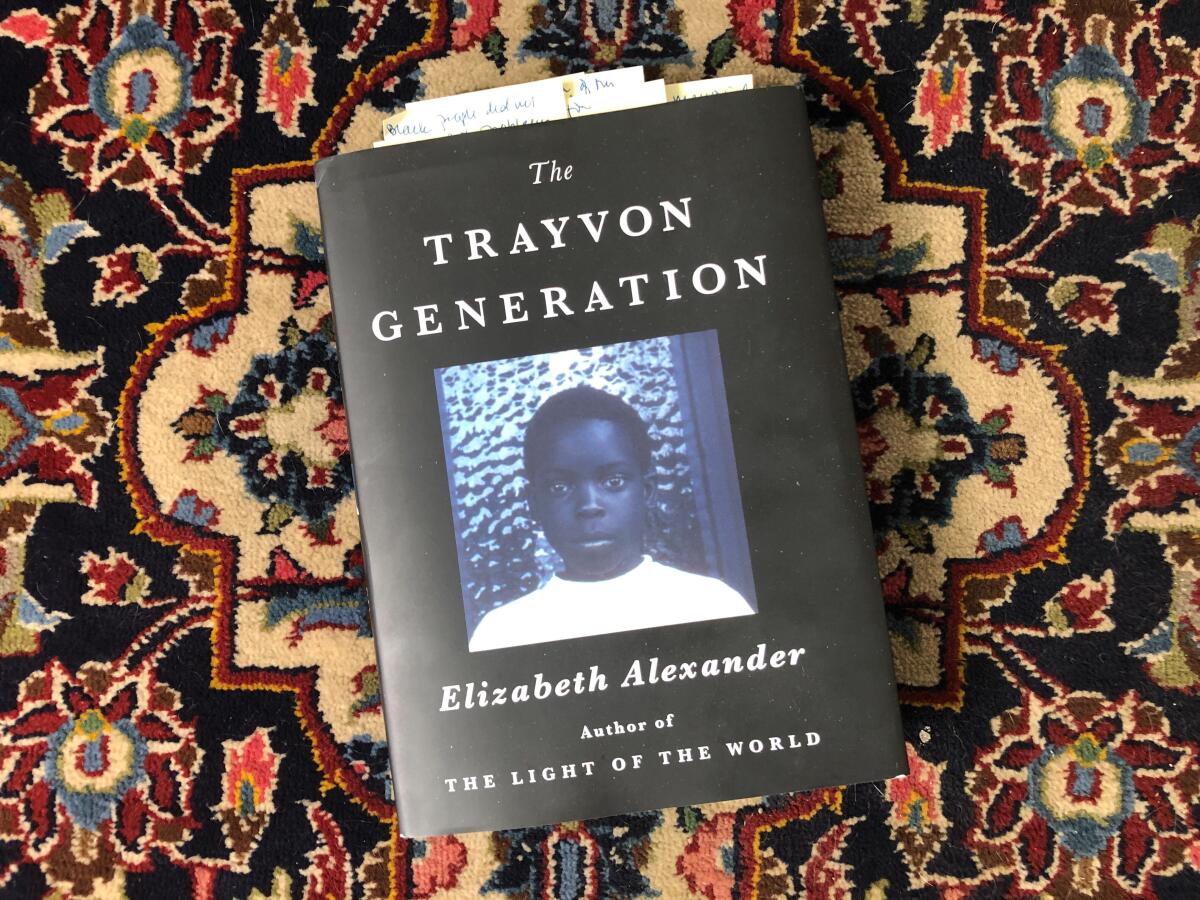
I’ll start with the book.
Alexander is a poet and scholar and Pulitzer finalist who currently serves as the president of the Mellon Foundation. One of her most important undertakings at Mellon has been the Monuments Project, a $250-million initiative in support of public projects that “more completely and accurately represent the multiplicity and complexity of American stories.”
“The Trayvon Generation” was born of an essay Alexander wrote for the New Yorker in the wake of George Floyd’s murder in 2020. In it, she explored the psychology of a generation of Black children over the last quarter of a century — kids who watched “violations up close and on their cell phones, so many times over.” It is one of the pieces of writing, produced during the uprisings of 2020, that remains seared in my memory.
Alexander’s new book contains that essay, along with many others. Particularly insightful is one titled “here lies,” which uses art and poetry to discuss the narratives put forth by U.S. monuments. “I am finally beginning to fully understand the didactic violence of monuments and what they revere and hold up as glorious,” she writes. “Their relative scale, too, instructs.”
Make the most of L.A.
Get our guide to events and happenings in the SoCal arts scene. In your inbox once a week.
You may occasionally receive promotional content from the Los Angeles Times.
Which brings me to Stone Mountain: a 1,700-foot-high bas relief carved into a granite outcropping about half an hour east of Atlanta honoring three prominent figures of the Confederacy — Jefferson Davis, Robert E. Lee and Thomas “Stonewall” Jackson. A work touted on the park’s website as “the largest high relief sculpture of the world.”
Beyond its scale, there is the troubled history of the site. Stone Mountain is where the Ku Klux Klan, inspired by D.W. Griffith’s “Birth of a Nation,” staged its rebirth in 1915 by burning a cross.
Interestingly, the park’s website makes no mention of slavery or the KKK. An audio that plays on the viewing platform likewise avoids these topics, instead describing Lee as “one of the South’s most beloved leaders.” The exhibit within the adjacent hall makes only passing reference to the KKK with a small placard that reads, “A Dark Side of Our History.”
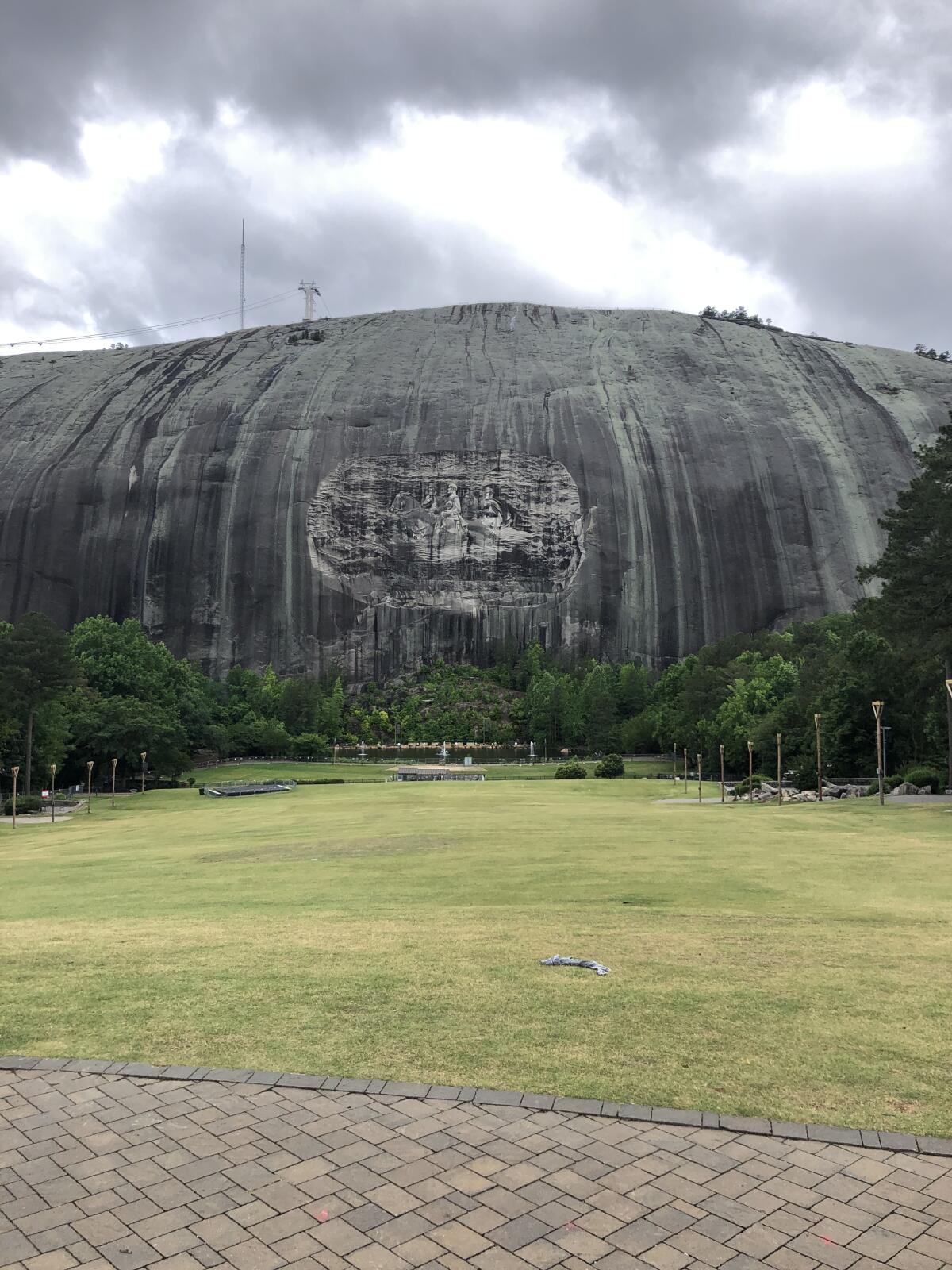
I’d argue that it’s not “a side,” but the history. Alexander addresses this in her essay, noting that Stone Mountain has a close connection to the Klan: Its first sculptor, Gutzon Borglum (who would later work on Mt. Rushmore) had deep ties to the Klan, the owner of the land where the monument is located was a member and Klan money helped finance the monument.
A more complete telling of history at the site is reportedly in the works. But Stone Mountain is a shining example of selective amnesia and Lost Cause propaganda.
And the inventions of the Lost Cause bear a remarkable parallel to the campaigns of disinformation that have buttressed the belief of the Jan. 6 insurrectionists and those who support them (cough cough, Fox News). David A. Graham, a staff writer for the Atlantic, compared the two in an essay last fall: “The New Lost Cause, like the old one, seeks to convert a shameful catastrophe into a celebration of the valor and honor of the culprits and portray those who attacked the country as the true patriots.”
Jan. 6 was no isolated incident. White grievance was what fueled Trump’s political rise; white grievance fueled Jan. 6.
And those ideas have, for decades, been carved into the U.S. landscape: “Monuments put forth ideas and look forward, even when their content is historical,” writes Alexander in her book. “They chart future values by what they revere.”
Stone Mountain doesn’t reside in the past. It’s where we are standing right now.
On and off the stage
It’s a play about basketball that is organized like a game: four quarters, each of which are devoted to a different moment in the career of the influential LeBron James (before he joined the Lakers). No prior knowledge of sports is required to see “King James,” which just opened at the Mark Taper Forum in a co-production with Chicago’s Steppenwolf Theatre Company, writes Times theater critic Charles McNulty. Rajiv Joseph’s play “takes up the question of why we develop intense identifications with individual athletes and teams, but it’s ultimately a study in friendship.”
This is a subject, he notes, that “has been curiously neglected by dramatists given its centrality to most of our lives.”

At the Pasadena Playhouse, McNulty caught a production of Anton Chekhov’s “Uncle Vanya.” Directed by Michael Michetti, the translation on view is a collaboration between playwright Richard Nelson and the team of Richard Pevear and Larissa Volokhonsky. The production, reports McNulty, is “commendable if not quite settled,” with the best moments arriving when “actors are reacting to one another.”
In a related piece, McNulty explores how Chekhov became the playwright of the moment. “More consumed with questions than with answers, Chekhov’s plays depict human beings rather than heroes or villains,” he writes. “Life is captured in plots in which not much seems to happen yet by the end everything is changed.”
It’s Tony Awards time! The 75th edition of the show will have a portion live on CBS and another piece of the show streaming on Paramount+. The Times’ Jessica Gelt has all the deets on where and how to watch.
Visual culture
Elaborate breastplates, pectoral adornments, votive offerings and “astounding” nose ornaments are some of what’s on view in “The Portable Universe: Thought and Splendor of Indigenous Colombia” — a new exhibition at LACMA that Times art critic Christopher Knight describes as “deeply engaging.” The show features “exquisitely crafted” works made from tumbaga (an alloy crafted from gold and copper and sometimes other metals), as well as numerous pieces from a recently acquired 700-piece collection of Colombian ceramics. These include some of the exhibition’s “most compelling” objects: “The inventiveness,” writes Knight, “is often bracing.”
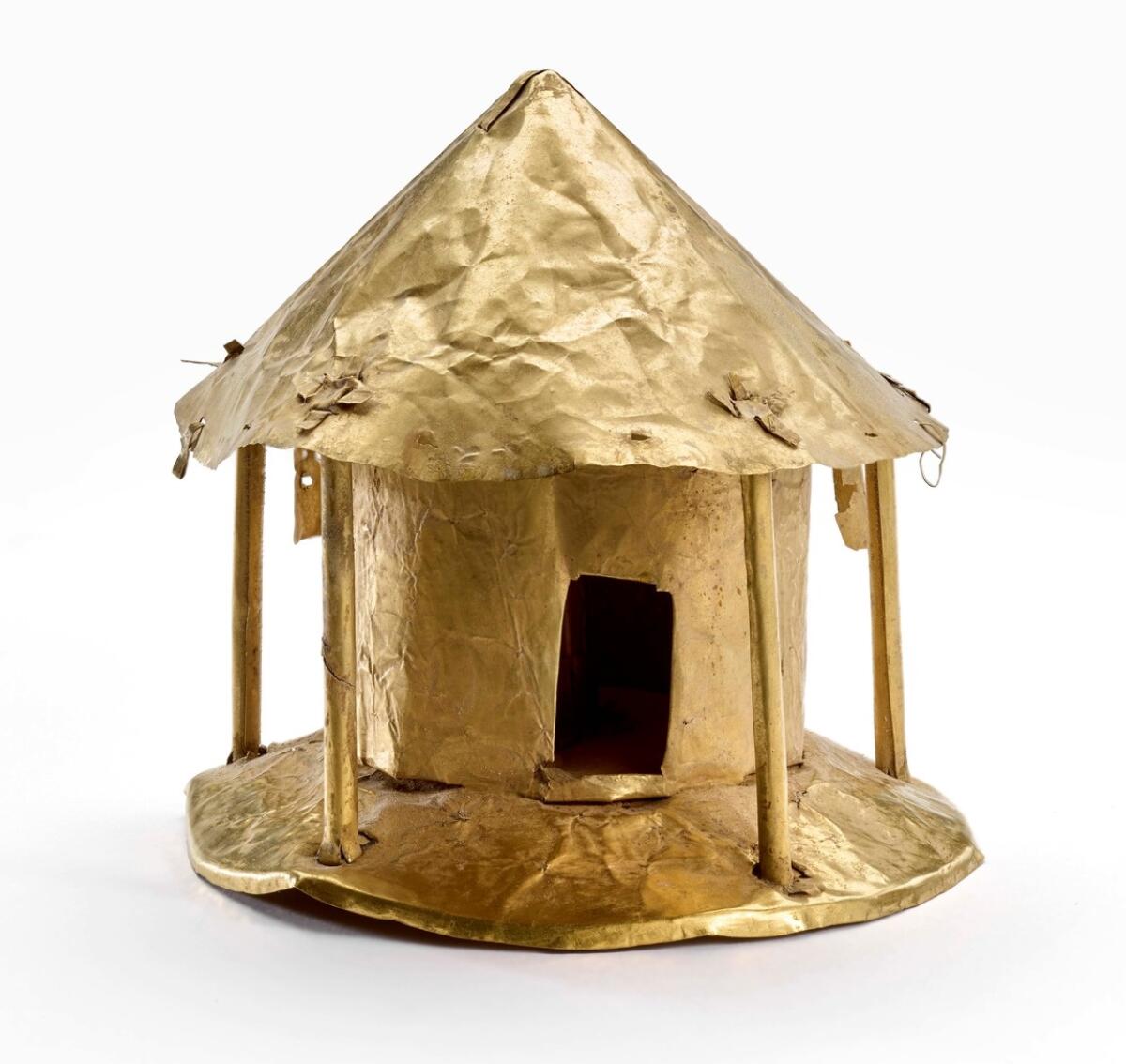
Paris Hilton, art patron. Put that in your named, capital construction project and smoke it. The internet’s original influencer gifted LACMA a fund for acquiring digital works by women. In conjunction with the gift, the museum has acquired works linked to NFTs by artists Krista Kim and Shantell Martin. As my colleague Deborah Vankin reports, it’s Hilton’s first major donation to an art museum.
Enjoying this newsletter? Consider subscribing to the Los Angeles Times
Your support helps us deliver the news that matters most. Become a subscriber.
The Orange County Museum of Art is set to open its Morphosis-designed building to the public on Oct. 8. Greeting visitors at the top of the museum’s sculpture terrace will be a new site-specific commission by Sanford Biggers. The piece consists of a reclining male figure wearing a mask inspired by 19th century double face masks created by the Baule people of the Ivory Coast. “It’s a piece that really looks at our notions of beauty and power and representation by using classical sculpture, both European and African,” Biggers tells Vankin.

In other news, contributor Christina Catherine Martinez went to the Siegfried & Roy estate sale, and she brings us the goods. Come for the ’70s-era Western-themed jackets, stay for the possible Berlin Wall fragment. Sold!
I am totally here for contributor Michelle Groskopf’s photos of the MOCA Gala. Oh, to be a cater waiter in this room.

Essential happenings
Matt Cooper has got the six picks for the weekend, including Shakespeare productions at Will Geer’s Theatricum Botanicum and performances by Mark Morris Dance Group at the Broad Stage in Santa Monica through Saturday.
Last week, we unveiled our comprehensive package marking the 100th anniversary of the Hollywood Bowl. This week, Jessica Gelt looks at how the Bowl will be paying tribute to some of the most memorable performances of the past. Missed Frank Sinatra when he was at the Bowl in ’43? Billie Eilish and Debbie Harry will be paying tribute to the crooner and singer Peggy Lee on July 27. Gelt has a rundown on the performances.
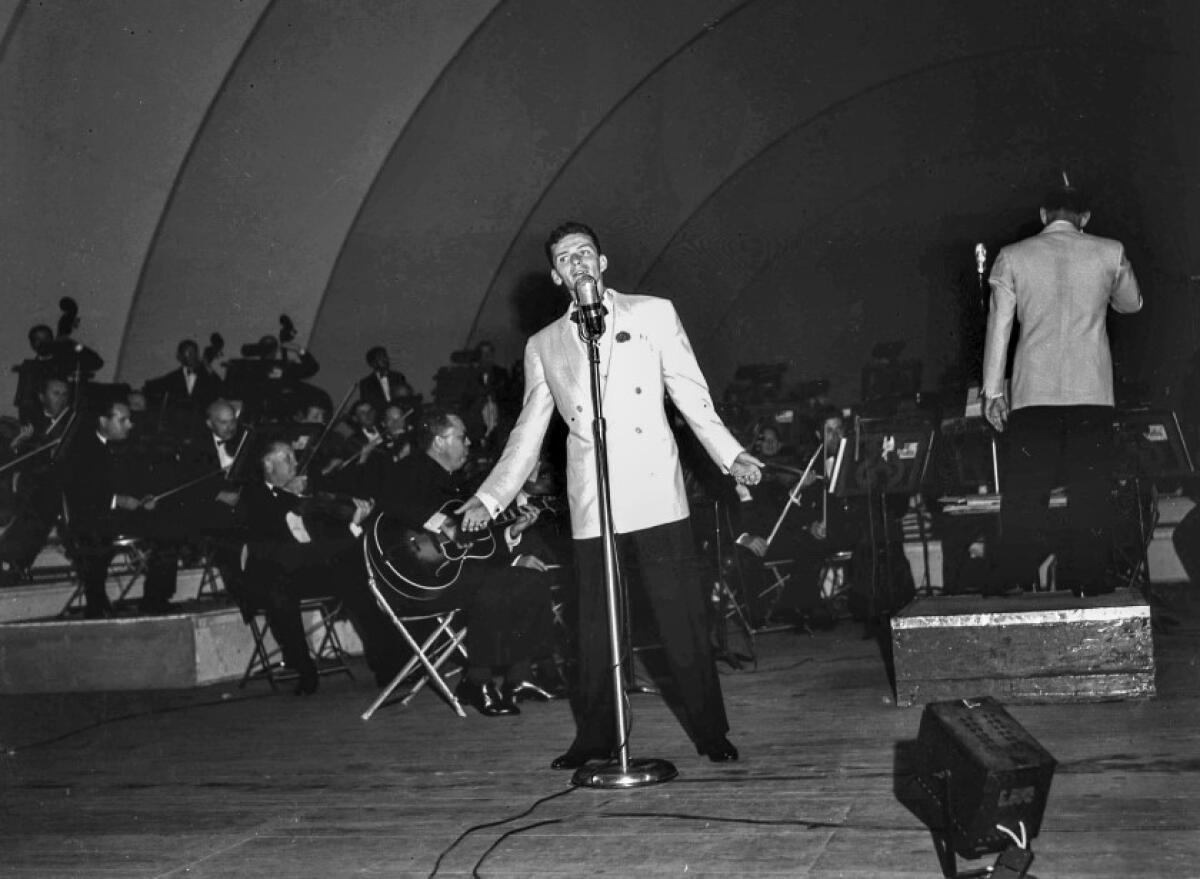
Moves
Marian Goodman gallery is opening a branch in L.A. The space will occupy a 1920s warehouse that will be revamped by L.A. architects Johnston MarkLee.
Passages
Paula Rego, a Portuguese-born artist, whose “beautiful-grotesque” pieces were inspired by myth and her own upbringing under dictatorship, has died at 87.
In other news
— France has suspended former Louvre director Jean-Luc Martinez from an ambassadorship after he was charged with art trafficking and money laundering. Martinez, through his lawyers, has denied any wrongdoing.
— A new study reports high levels of political meddling and interference in museums in Central and Southeastern Europe.
— Almost half of U.S. museum exhibitions focus on just 4% of contemporary artists.
— Max Pearl pores over NFT art so you don’t have to.
— Eva Recinos takes us on a tour of one of L.A.’s newest alternative spaces, Tlaloc Studios — with a birria recommendation to boot!
— Evan Nicole Brown has a look at the Kinsey African American Art & History Collection, currently on view at SoFi Stadium.
— Catherine Wagley reports on the keen-eyed collector Diana Zlotnick, author of a ’70s-era arts newsletter, whose contributions to the L.A. scene have been overlooked.
— Artist Theaster Gates (with the assistance of David Adjaye) designed this year’s Serpentine Pavilion in London. Guardian architecture critic Oliver Wainwright has a look.
— San Diego’s new ballet company, Golden State Ballet, steps out.
— Brian Seibert has a look at how dance is being represented on the Broadway stage.
And last but not least ...
The story of the car that the Shah gave to Romanian dictator Nicolae Ceausescu and how it is being remade by artists. Dig.
The biggest entertainment stories
Get our big stories about Hollywood, film, television, music, arts, culture and more right in your inbox as soon as they publish.
You may occasionally receive promotional content from the Los Angeles Times.




